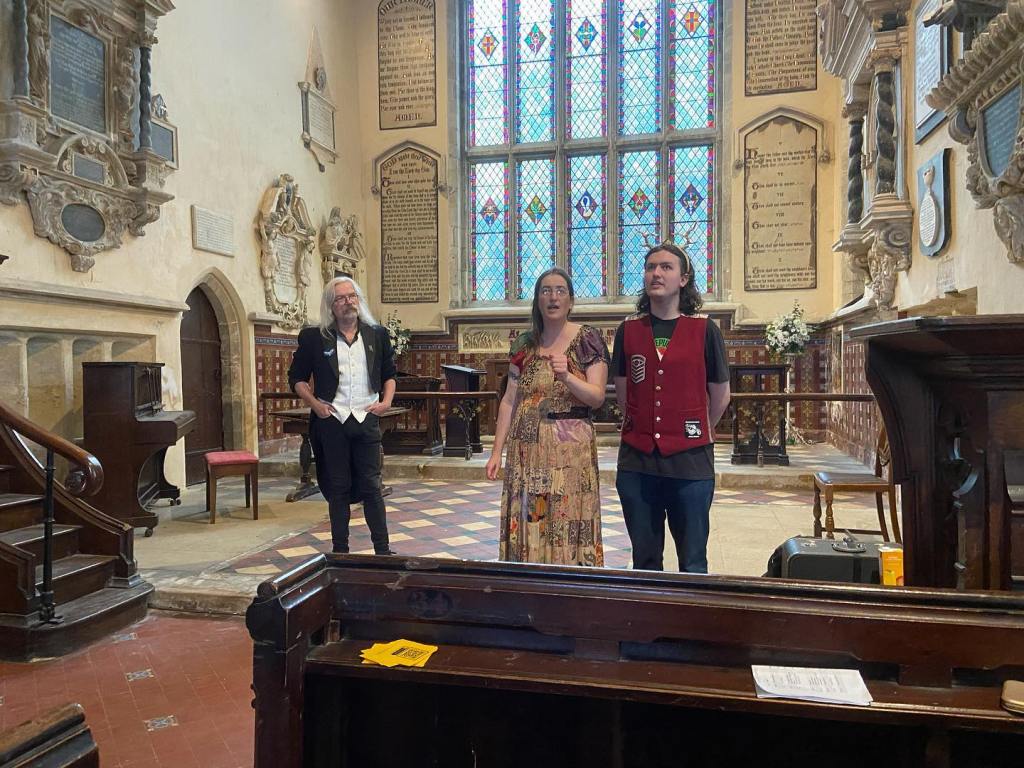(Nimue)
I’m very much a fan of having local festivals and events be part of my wheel of the year, and I think I have a new one to add. St Blaise’s Day is celebrated at nearby Frampton on Severn in a very old church that used to have an image of him painted on the wall. He’s the patron saint of wool combers and sore throats. This was a wool producing area historically so it makes sense that he was honoured here. Frampton has a wonderful giant and a folk celebration of the saint. I’m always up for a bit of living tradition.
We had an unexpected change of programme as the chaps who should have been dancing solo wasn’t able to. Could we do something? A few of us huddled and tried to work out what we all knew that was suitable for a church! We settled on 3 Ravens. Then the organiser asked what we were called for purposes of this event, and we said Carnival of Cryptids.
Rather unexpectedly this was the first outing for a new project. Carnival of Cryptids sings at Mary de Crypt in Gloucester once a month, and goes out to local events. It’s a loose, informal group with plenty of room for people to drop in and out as they see fit. We have some members with a lot of other commitments, and a number with significant health problems so it has to be flexible. James and I are holding the core of it, we’ve got a tight core of capable and fairly committed singers, and a wider community around that. I like running things in ways that allow people to commit to the degree that suits them.
The four of us had not actually sung together before as a group, so I think we did pretty well. I’m looking forward to seeing how this project evolves, to building a new repertoire, and exploring new events and creative possibilities. Keith recorded the video – he would normally be part of this but wasn’t feeling equal to singing at the weekend.



